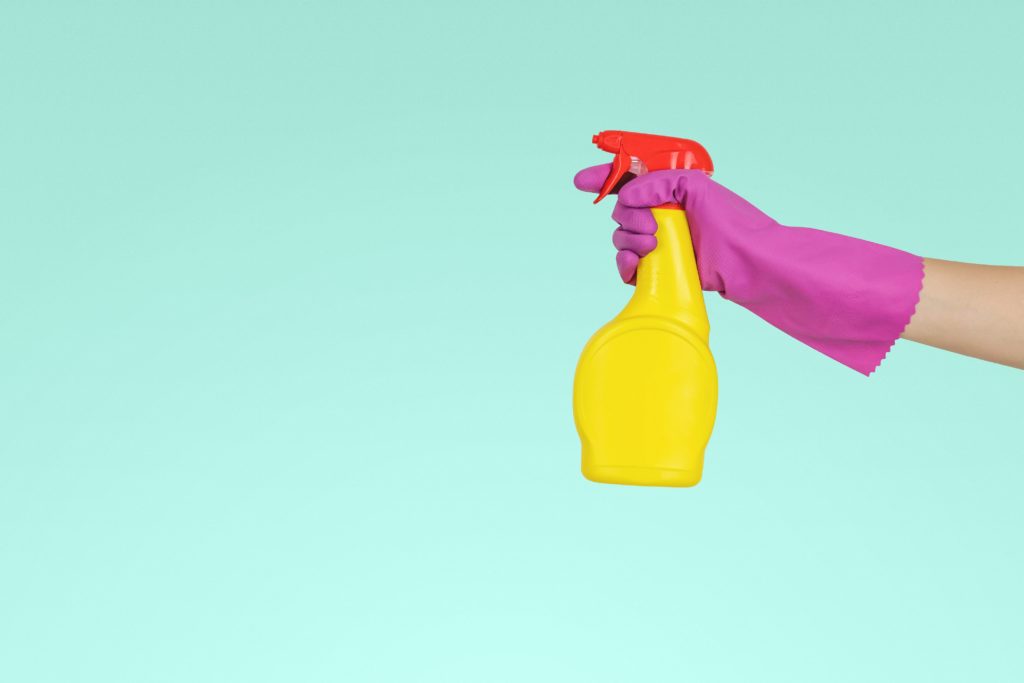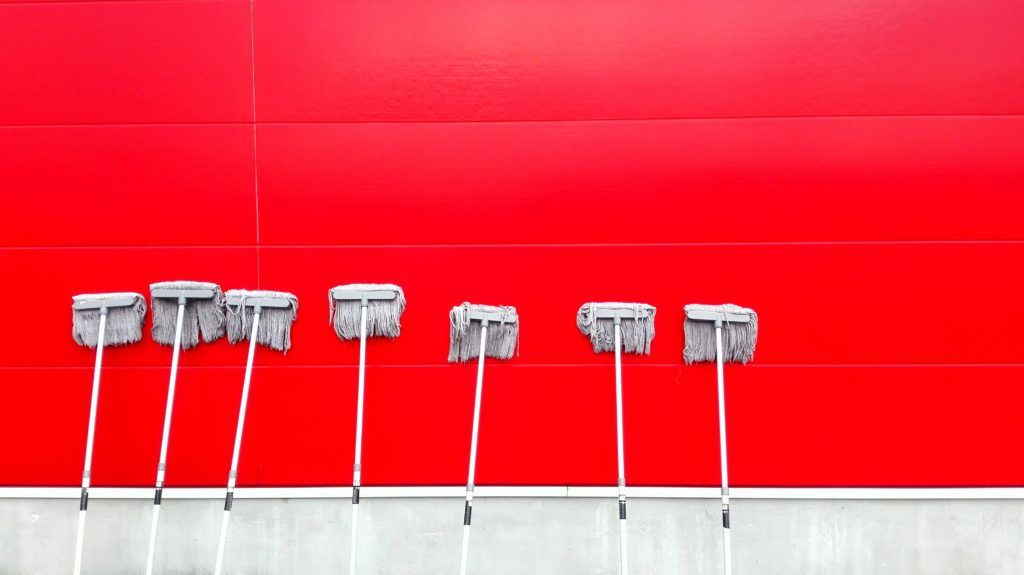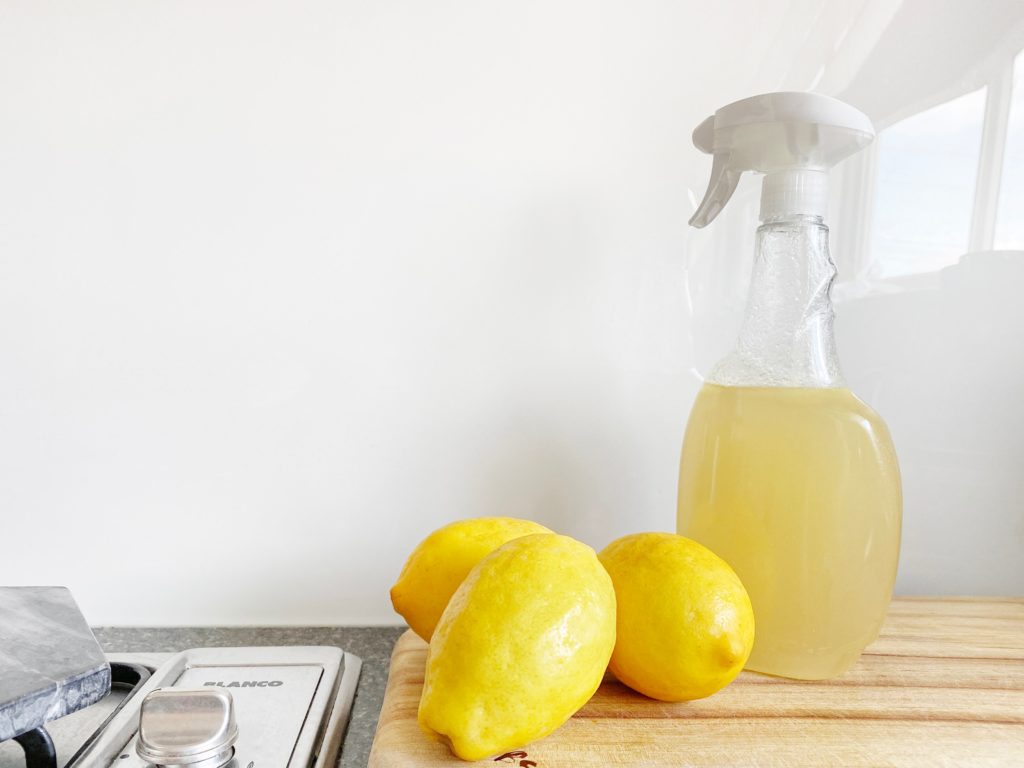
It’s no secret that conventional cleaners and disinfectants pose health risks and environmental hazards, but do we pay attention to this at all?
Do we take into serious consideration the fact that many commercial cleaning products contain toxic chemicals that could harm the respiratory and the reproductive health, and disrupt the hormonal systems of the human body? Not to mention the pollutants they have, which can never be good for Mother Earth.

Chances are we just shrug this piece of information off because our mindset is either “We don’t use strong disinfectants that often anyway,” or “What choice do we have? We need something that gets the job done.”
Well the thing is there are green alternatives that we can always easily find in the market or in our own kitchen. It just takes effort to learn them and to transition our entire cleaning system from non-green to eco-friendly, but it’s worth all the work when you know for sure that your pool of cleaning materials are free of harsh chemicals. Safe for your family and for the environment.
Here are simple but meaningful steps you can take to start your green cleaning journey:
Step 1: Understand the difference between cleaning and disinfecting.
One crucial thing that we need to understand is the big difference between cleaning and disinfecting. Cleaning with soap and water removes dirt and germs off the surface. Disinfecting, on the other hand, kills the microorganisms in place. Although disinfectants don’t wipe off dirt and germs, they effectively prevent the growth and the spread of disease-causing pathogens by destroying them. Knowing these distinctions will help us find the proper green alternatives for our conventional cleaners and disinfectants. It will also help us use these solutions efficiently.
Step 2: Look for the green counterparts of your cleaning solutions.
Once you decide to go green, do so gradually. We don’t recommend jumping right into DIY alternatives for cleaners and disinfectants because these take time and a fair amount of expertise to produce. What you can do for a start is search for the eco-friendly versions of your cleaning products in the market. For these, you’d want solutions with low VOCs (volatile organic compounds) and low toxicity, and preferably packed in recyclable containers. Green products carry labels like “ECO-LABEL” or “GREEN LABEL”.
Step 3: Use biodegradable cleaning materials.
Most of the cleaning tools we have at home are made from non-biodegradable materials. If you look it up online, you’ll find that there are hundreds of biodegradable alternatives for items like dishcloths and wiping cloths, brushes and scrubs, mops, and waste bags. These substitutes are often made from durable natural fibres and wood materials so you don’t have to worry about the lifespan of these products. The most important part is when you dispose of them, you know that they’ll decompose and not contribute to the deterioration of nature.
Step 4: Learn the natural ingredients you can use for DIY alternatives.

Again, the internet is your best source of recipes for homemade cleaning solutions. There are hundreds—if not thousands—of tips and tricks you can learn from industry and household experts who share their knowledge online. What we’ve listed here are some of the most recommended natural cleaning ingredients that have stood the test of time:
Baking Soda — This alternative is an alkaline compound that’s also known as sodium bicarbonate. Although it’s not a disinfectant, baking soda has been widely used as a cleaning agent for decades because it can easily dissolve dirt and grease from materials like glass and plastic, among others. It’s also completely non-toxic, which is why it’s safe to use for cleaning kitchen surfaces.
Essential Oils — These all natural plant-based distilled liquids are not only aromatic and therapeutic, they also contain antibacterial and antimicrobial properties that can dissolve grease, remove stains, deodorize, and, most of all, disinfect.
Vinegar — The acetic acid property of vinegar is what makes it a good multipurpose cleaner aside from being a staple cooking ingredient. It can cut through grease and grime, and it is acidic enough to kill microorganisms. The best type of vinegar to use for cleaning is the white distilled vinegar, which has about 5% acidity and less color.
Each of these ingredients can work as a cleaner or a disinfectant on its own, you just have to add a bit of water, but when you combine them all together, you can create various homemade cleaning solutions that you can use in the kitchen, in the bathroom, in the living room, in the bedroom, in the laundry, and basically any part of the house that you need to clean. These affordable and eco-friendly substitutes for your commercial detergents and disinfectants can clean anything from dinnerware, to tables, to kitchen countertops, to tubs, to toilets, and even furniture.
Step 5: Go for conventional cleaner brands with environmental efforts.
But let’s say you do want to keep at least one strong bleacher in stock for cases that would require it, remember to look for brands that give back to the environment. Giving back can be in the form of using eco-friendly materials like recycled plastic for the packaging of products, using refillable containers—an act that promotes recycling, or supporting charities for the environment. No matter how small, our efforts can go a long way as long as we try to be as eco-friendly as possible.
Step 6: Follow instructions on how to use green cleaners.
Although they work as alternatives for cleaners and disinfectants, green products are not as strong as their conventional counterparts. To achieve best results from green cleaning, be sure to learn and to follow the proper step-by-step use of these products. Some may need to be left on the surface a little longer than your go-to disinfectant, but a few additional minutes to your routine should be fine if it means you’re significantly decreasing your family’s exposure to harmful chemicals and also the amount of pollution in nature.
Shifting to green cleaning is not as easy as it sounds, but it is possible. Besides, using non-toxic materials is not only safe for us and for the environment, it might also work better for our belongings because they’re not as corrosive as the conventional cleaning solutions available in the market. But one thing is for sure, if we set our mind on green cleaning, we’re definitely in for benefits that will count in the long run.



